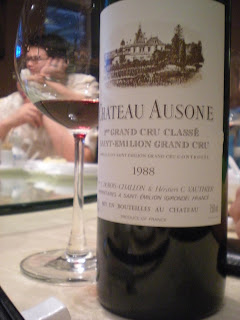 Ch Smith Haut Lafite Blanc 1995
Ch Smith Haut Lafite Blanc 1995 Ch Ausone 1988
Ch Ausone 1988 Le Pin wanna be?
Le Pin wanna be? La Gomerie 1999

Troplong Mondot 1999


"rejected friend eggs"
~~~~~~~~
Chris Low: We had a chinese meal at our regular Cantonese Restaurent- Elegance Inn with some 1er selections of great growth right banks and a age bordeaux blanc.
This time, we invite one of our dear friend-Chef Max Chin as our guest blogger ans this is what he has to say.
Max Chin: "Being invited to a Chinese dinner last evening at Elegant Inn @ Hap Seng Building. Meal wasn't as great as the wines accompanied.
Excel Bordeaux Grand Crus line up with Smith Haut Laffite (white), Ausone, La Gomerie and Troplong Mondot which indeed all amazing in its own pristine class and tastes. Am I converted into a Fil de Bordelaise with these Grand Crus...Je sais Pas ??? My "Cork Bros" would need to work harder!
Lionel: Oh yes, did you tell them the fry egg is very good?
Leslie: I love eggs...i dont mind the rejects...






